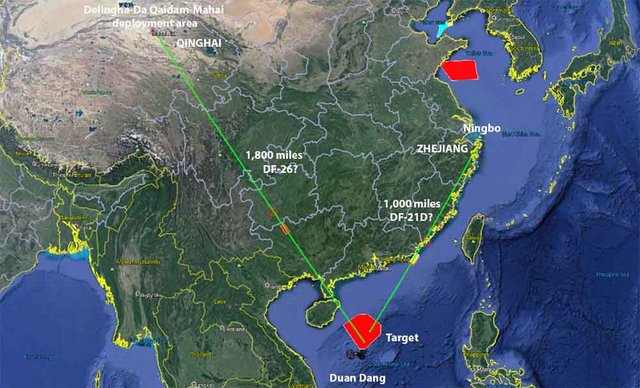Hendrik_2000
Lieutenant General
Intercontinental ballistic missiles and intermediate range even without MaRVs can be very accurate, some reaching 50 meters, but because they have a “post boost” which is a propelled stage that puts the ballistic reentry vehicle in the exact position to have a very accurate big. Short- and medium-range missiles (up to 3000 km) do not adopt this type of stage and depend entirely on a MaRV for accuracy, otherwise the accuracy is very poor.
A minority of these Chinese missiles are equipped with MaRVs (maneuverable reentry vehicle) and none yet with HGV (hypersonic glider vehicle). That is, most have very poor accuracy, which removes much of its real value. That is changing, but it turns out that at present the Chinese cannot get the best out of their ASBM devices.
Not all warheads can be implemented with MaRVs. The internal volume and mass of a MaRV available for the actual payload (explosives) are significantly reduced by additional indispensable equipment (guidance system, steering elements, energy sources, perhaps also fuel sensors), among other things. An example would be the DF-11, that missile cannot have the space needed to load MaRV, as this would exclude space for other essential things in the operation of the missile.
A ballistic missile with a range of 1000 km with a conventional RV (reentry vehicle) can only adjust its accuracy in the thrust phase, with the engines running. It does not have an altitude control system in space capable of refining the accuracy of its warhead. It only ejects it when the propellant runs out and the rocket engine shuts down. At most it corrects its trajectory based on the inertial system and GPS while burning fuel. This type of action is impossible to provide great precision to a ballistic warhead that will suffer the consequences of passing through the atmosphere, which will result in a departure from the expected point of impact and so that there is no correction.
There are two ways for a ballistic missile to re-enter the atmosphere: ejecting a reentry vehicle or the missile being a single body. If it is a reentry vehicle (RV) it cannot have terminal orientation because it does not have actuators that can interact with the atmosphere and make it change direction, unless it is a MaRV.
If it is single-body it can change direction with the help of fins that would work throughout the flight.
There is no way for a ballistic missile to have a terminal guidance system other than a MaRV, and it cannot be applied to a traditional warhead. It can even have a post boost and refine the accuracy, but then it would be inertial / GPS or equivalent, but not a terminal orientation with a radar on the nose of the warhead.
As for the satellite constellation, Hendrick responded to my comment by stating about the use of Yaogan-30 for the designation of a moving target as a CVN, and the task was only completed last year. And the previous years? Didn't I have the ability to track a ship in the South China Sea?
This is all BS show your ignorance, hubris and superiority complex. watch this shengzhou docking with accuracy of 1 cm using mini thruster remotely controlled

